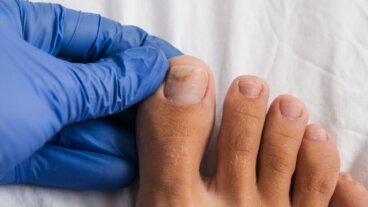The Multiple Uses of the Mineral Alum

Alum stone is one of those things that you should always have available in your home. Believe it or not, it serves as the first response to various common circumstances, such as cuts or rashes. Don’t believe us? Keep reading and find out about the mineral alum.
The uses of the mineral alum
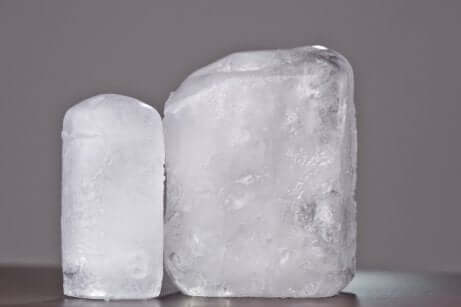
You can buy alum stone in pharmacies or health food stores in its “natural” or “synthetic” versions. Of course, we recommend you buy the natural or alunite version, whose main component is Potassium-Alum or K Al3 (OH) 6 (SO4) 2.
This volcanic stone comes from magma rock. As it’s a natural product whose origin depends on the alterations of potassium feldspar in the rocks, you’ll probably notice differences in color and texture between one stone and another. Don’t worry, that’s totally normal.
Let’s take a look at how you can use this stone in your house.
1. Alum as deodorant
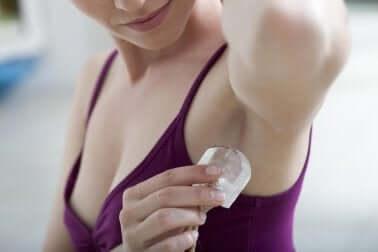
The most common use of alum stone is deodorant. In fact, you can read thousands of stories on the internet of people who have abandoned conventional deodorants for this natural option.
Many of these people have decided to make a change in the search for an aluminum-free option since some studies have associated the use of deodorants with aluminum to breast cancer. Some researchers have suggested that, like estrogen, which can promote the growth of cancer cells, aluminum-based products may contribute to the development of cancer. However, there is still no conclusive data in this regard.
It’s worth noting that the use of this stone doesn’t mean abandoning aluminum since this stone is a saline compound based on aluminum and potassium. So if that was your only reason for the change, you should rethink it.
It’s true that when using this stone as a deodorant you avoid alcohols, parabens, and other preservatives. Alum is totally natural and has bactericidal and antiperspirant effects. To use it, you just have to moisten the stone and rub it over your armpits, as you would with a roll-on deodorant.
Note: Be aware that alum ore may cause allergies. Stop using it if you experience a rash or discomfort.
Read also: 5 Natural Deodorants to Say Goodbye to Underarm Odor
2. Acne treatment
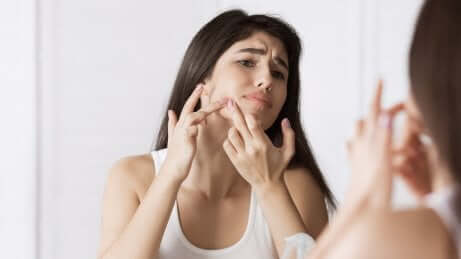
Although its effectiveness is not 100% proven, it’s believed that the antibacterial properties of alum could help treat acne, “drying” pimples, and closing open pores.
In fact, some cosmetic products have alum in their ingredients. Of course, before putting this product on your face, you should check with a specialist.
3. Help deal with cuts
Another of the supposed properties of this stone is to help stop bleeding from small cuts. Its antiseptic action could help prevent infections.
4. To hydrate your face after shaving
The antiseptic properties of the alum mineral make it a good natural option to use after shaving. According to reports, it can prevent redness and discomfort.
5. Eliminate of canker sores alum
If you have sores in your mouth, you can turn to alum stone. For this, you could prepare a solution with a couple of tablespoons of the pulverized stone in a cup of water and gargle on the affected area.
6. Reduce the presence of stretch marks
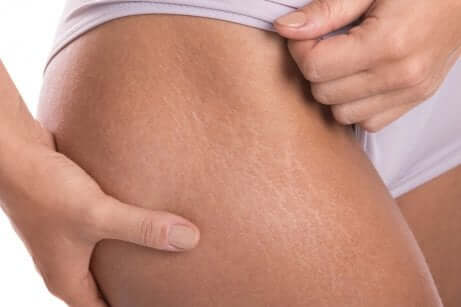
Although it’s true that stretch marks won’t disappear, alum could help hide them.
To do this, you’ll need alum crystals, soap, and moisturizer. Take a bath and lather the area to be treated. Place the crystals on the stretch marks and leave to act for a few minutes. Rinse well and then apply the cream to hydrate your skin.
Discover: Treatments to Eliminate Stretch Marks
7. Soothe burning skin after waxing
Just as you can use it as an aftershave, it can soothe the skin after waxing and can be very useful to avoid redness and discomfort. Apply the moistened stone to the waxed area.
8. Stye treatment
The antibacterial properties of alum could help to eliminate the bacteria that cause annoying styes. However, before using this substance on your eyelids, consult a specialist.
As you can see, alum has many uses.
Do you already have alum stone in your home? If not, you may need to buy one because it can help you out of a tricky situation or two.
All cited sources were thoroughly reviewed by our team to ensure their quality, reliability, currency, and validity. The bibliography of this article was considered reliable and of academic or scientific accuracy.
- National Cancer Institute. Antiperspirants/Deodorants and Breast Cancer. https://www.cancer.gov/about-cancer/causes-prevention/risk/myths/antiperspirants-fact-sheet
- Darbre PD. Underarm antiperspirants/deodorants and breast cancer. Breast Cancer Research 2009; 11 Suppl 3:S5. doi: 1186/bcr2424Exit Disclaimer.
- McGrath KG. An earlier age of breast cancer diagnosis related to more frequent use of antiperspirants/deodorants and underarm shaving. European Journal of Cancer 2003; 12(6):479–485. [PubMed Abstract]
- NCBI. (1996). In vitro antimicrobial activity of potash alum. https://www.ncbi.nlm.nih.gov/pubmed/8783521
This text is provided for informational purposes only and does not replace consultation with a professional. If in doubt, consult your specialist.

